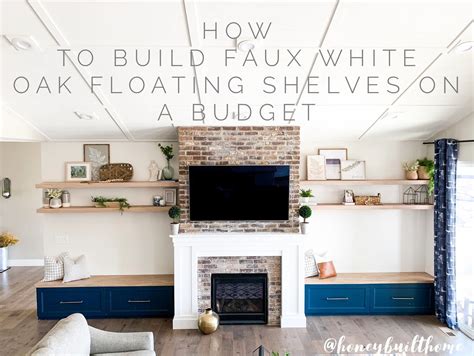Budget-Friendly Faux Wood: A DIY Masterclass
Transforming your home with the rich look of wood doesn't have to break the bank. This DIY masterclass explores the world of budget-friendly faux wood techniques, allowing you to achieve stunning, realistic results without the hefty price tag of real lumber. Whether you're a seasoned DIY enthusiast or a complete beginner, this guide will equip you with the skills and knowledge to create breathtaking faux wood finishes on various surfaces.
Why Choose Faux Wood?
Before diving into the techniques, let's explore why faux wood is such a popular choice for budget-conscious homeowners and DIYers:
- Cost-Effectiveness: Faux wood projects significantly reduce material costs compared to using real wood. This allows for greater creativity and the ability to undertake larger projects.
- Versatility: Faux wood techniques can be applied to a wide range of surfaces, including furniture, walls, and even crafts, opening up a world of creative possibilities.
- Accessibility: The materials needed for faux wood projects are readily available at most hardware stores and craft shops, making them easy to acquire.
- Sustainability: By choosing faux wood, you contribute to more sustainable practices, reducing the demand for real wood and its associated environmental impact.
- Ease of Maintenance: Faux wood is generally easier to clean and maintain than real wood, requiring less specialized care.
Popular Budget-Friendly Faux Wood Techniques
Several techniques can effectively mimic the look of wood, each with its own unique advantages and aesthetic appeal. Let's explore some of the most popular options:
1. Faux Wood Painting Techniques
This involves using paints and specialized tools to create realistic wood grain patterns. Several sub-techniques exist within this category:
- Dry Brushing: This technique uses a dry brush to lightly apply paint, creating a textured, slightly distressed look reminiscent of aged wood.
- Sponge Painting: Utilizing a sponge to dab on paint can generate a more varied and less uniform finish, mimicking the natural inconsistencies of real wood.
- Rag Rolling: A crumpled rag is used to apply paint, producing a unique, slightly uneven texture that resembles the knots and grain of wood. Experiment with different rag types for different effects.
- Tape and Stenciling: This offers greater control, allowing for precise wood grain replication. You can create custom stencils or use commercially available options.
2. Using Wood-Grain Wallpaper
This is a quick and easy solution for achieving a realistic wood look, particularly on larger surfaces like walls. Modern wallpapers offer incredibly lifelike wood grain patterns, making this a highly effective budget-friendly option. Ensure proper preparation of the wall surface for optimal adhesion.
3. Wood-Look Contact Paper
Contact paper is a fantastic option for smaller projects or surfaces that require less durability. Available in a wide variety of wood-grain designs, it is easy to apply and remove, making it ideal for temporary projects or renters.
H2: What are the best paints for faux wood finishes?
The best paints for achieving realistic faux wood finishes are acrylic paints. Their water-based nature makes them easy to clean up, and they offer excellent adhesion and durability. Consider using a combination of different shades within the same color family to create depth and dimension in your faux wood finish. For example, using a slightly darker base coat and lighter dry-brushing layers can create a strikingly realistic effect.
H2: How do I create a realistic wood grain effect?
Creating a realistic wood grain effect is all about mastering the techniques mentioned above – dry brushing, sponge painting, or rag rolling. Practice on scrap pieces of wood or cardboard to develop your skill and find the technique that best suits your style. Observing the grain patterns in real wood can greatly enhance your ability to replicate them using paint. Remember that slight imperfections contribute to the realism of the finish.
H2: What tools do I need for faux wood projects?
The tools required vary depending on the chosen technique. However, some common essentials include:
- Paintbrushes: A variety of brushes, including dry brushes, detail brushes, and wider brushes, will be helpful for different effects.
- Sponges: Natural sea sponges are ideal for creating a more natural-looking texture.
- Rags: Use old cotton rags or t-shirts.
- Paints: Acrylic paints are recommended.
- Painter's tape: For creating clean lines and stencils.
- Stencils (optional): For more precise wood grain replication.
- Sealer (optional): To protect the finished faux wood from wear and tear.
Conclusion
Budget-friendly faux wood offers an accessible and creative way to transform your home environment. By mastering these techniques and utilizing readily available materials, you can create stunning, realistic wood finishes without the expense of real wood. Experiment, have fun, and let your creativity shine through! Remember to always prepare your surfaces properly before beginning your project, and don't be afraid to experiment with different techniques to find your unique style. The possibilities are endless!

